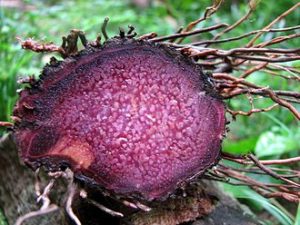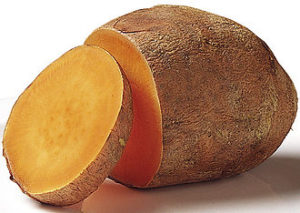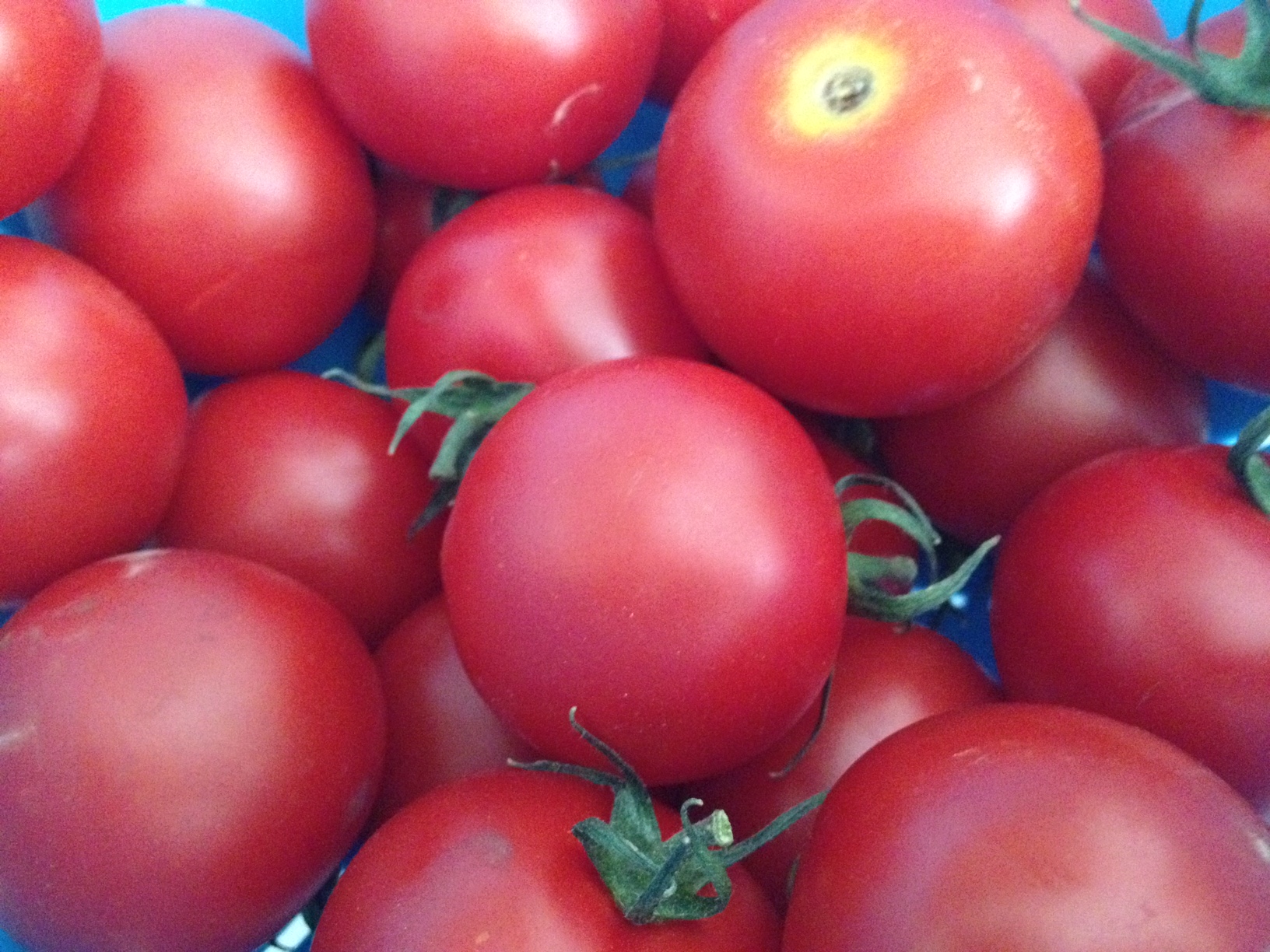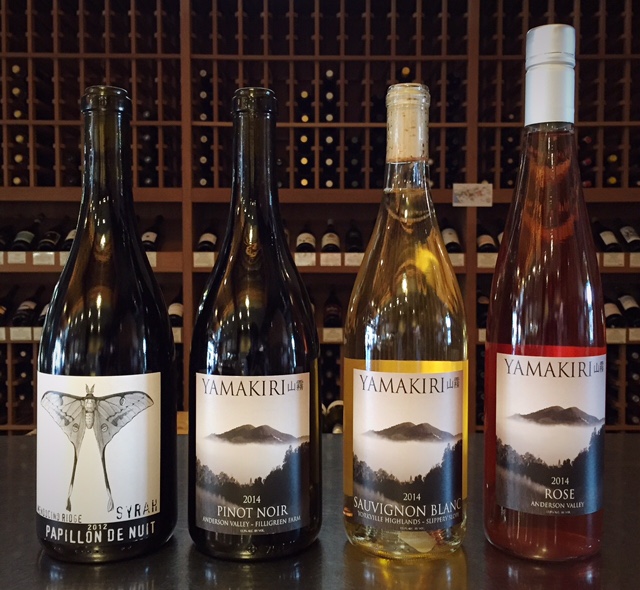
Purple Yam

Orange Sweet Potato
Yams or Sweet Potatoes?
We all love to make yams for Thanksgiving, but did you know that you are actually eating sweet potatoes? In the United States we refer to an orange fleshed sweet potato as a yam, but they are really two completely different species. The true yam does not grow in the northern hemisphere. They are only grown in the Caribbean, Africa and parts of Asia. The Yam can grown up to 150lbs and 4.5′ in length. Their flesh ranges in color from white to yellow to pink and they have a very thick, scaly, alligator like skin.
Their flesh is also very starchy and dry. Yams are more closely related to lilies and grasses than they are to sweet potatoes, which are in the morning glory family.
Sweet potatoes are native to tropical regions of South America. Peruvian sweet potato remnants dating as far back as 8000 BC have been found. You can eat them raw, baked, boiled, steamed, roasted, broiled, grilled, fried and just about any other way you can think of!
At The Natural Grocery Company, we have a variety of different sweet potatoes to
choose from year round. The orange flesh varieties are known as “moist fleshed” and the white
fleshed varieties are known as “dry fleshed.” Here are the types we carry at both our stores:
Garnet-An orange fleshed variety that is the most popular. This is the traditional “yam” we eat at
Thanksgiving. With a dark red skin and bright pumpkin colored flesh, this sweet potato is great
prepared almost any way. It is very sweet and has a nice creamy, velvety texture when cooked.
Jewel and Beauregard-Both types have an orange flesh. These varieties have tan skin and tend
to be a little sweeter than the Garnet. I like to use the Beauregard in my sweet potato pie recipe.
It is very moist when cooked and has a texture that is not as velvety as the Garnet. Great for
making sweet potato fries or chips!
Hannah– This variety has a light tan, almost white skin with white flesh. The white flesh is
crumbly and has the texture of a russet potato when cooked. This year, I will be making a
Hannah sweet potato pie with cardamom and vanilla.
Japanese– Also a white fleshed variety, this sweet potato has a very dark purple skin. Because of
its drier texture, I like to slice these, drizzle with olive oil, cinnamon and cayenne and bake at
350 degrees until they soften and turn a golden brown color. They are also nice in soups.
Purple Stokes/ Okinawa sweet potato- This super food variety is my favorite! With a bluish
purple skin and deep royal purple flesh, this sweet potato has a texture very similar to the Garnet
but has an extra sweet earthiness to the taste. Originally from the Americas, this variety was
introduced to Japan in the 14th century and has become a staple on the Island of Okinawa where
it is eaten almost every day. This is believed to be the reason why Okinawa has the largest
percentage of people living over the age of 100 (more than any other country). This variety has
150% more antioxidants than blueberries and is wonderful prepared almost any way. Try using
these in a pie (beautiful) or mashed instead of regular potatoes. Add some extra antioxidants to
your Thanksgiving table!
By Casey Goode, Produce Manger at ECNG



